



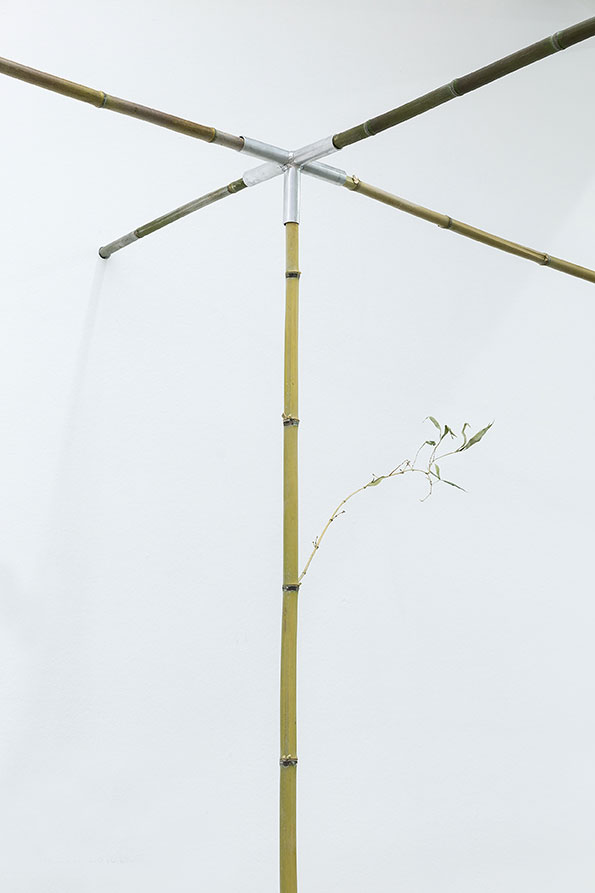

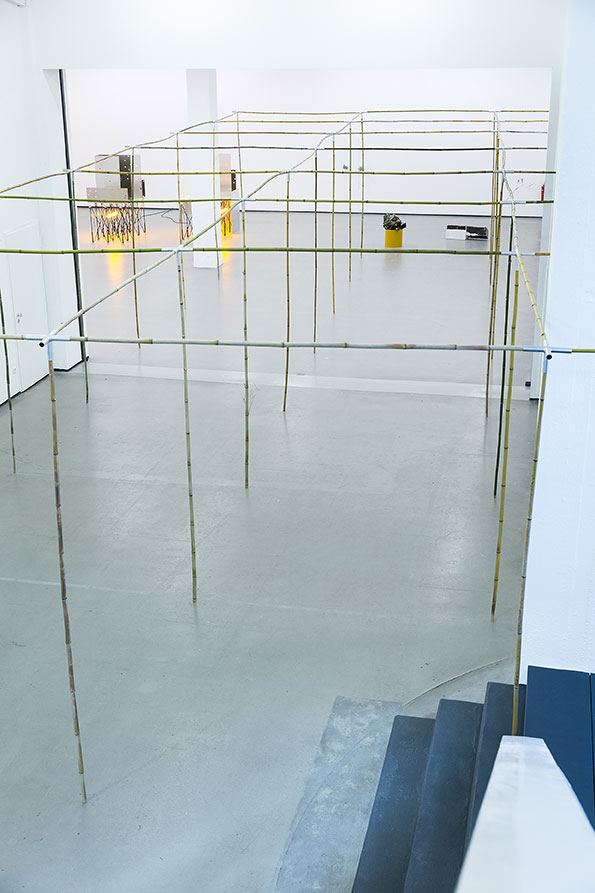





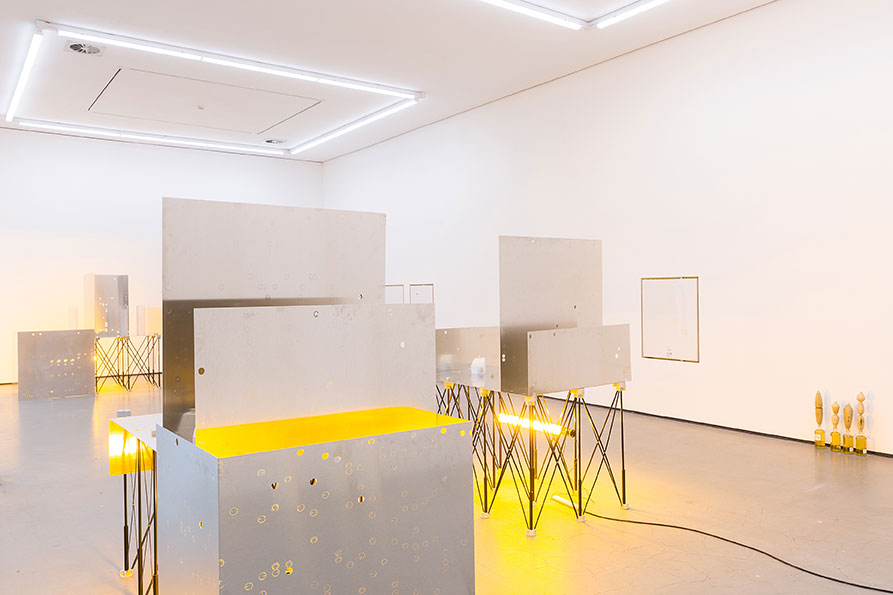
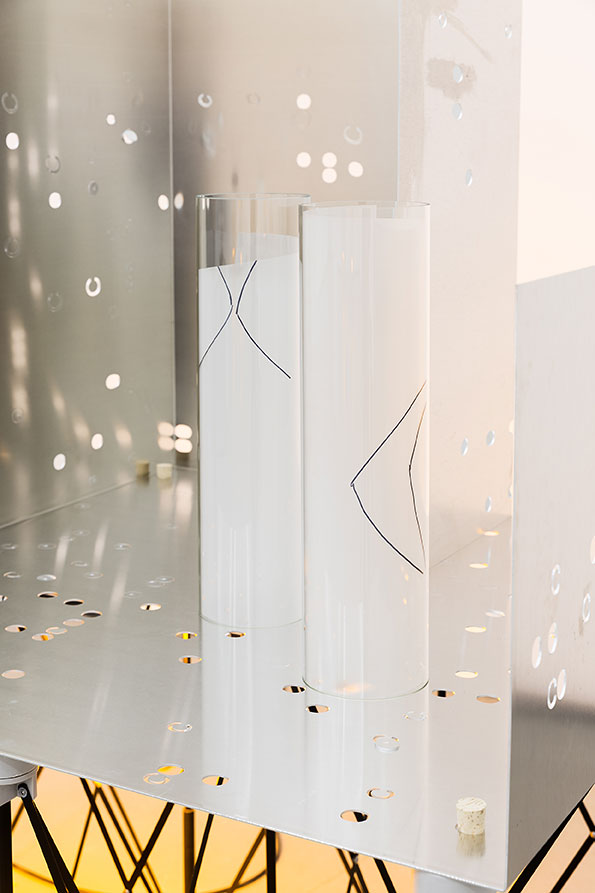

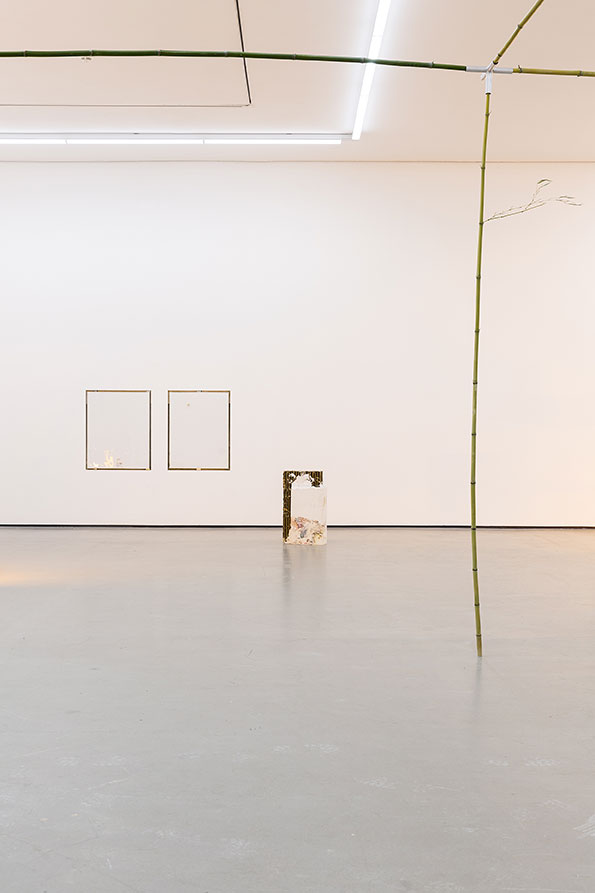
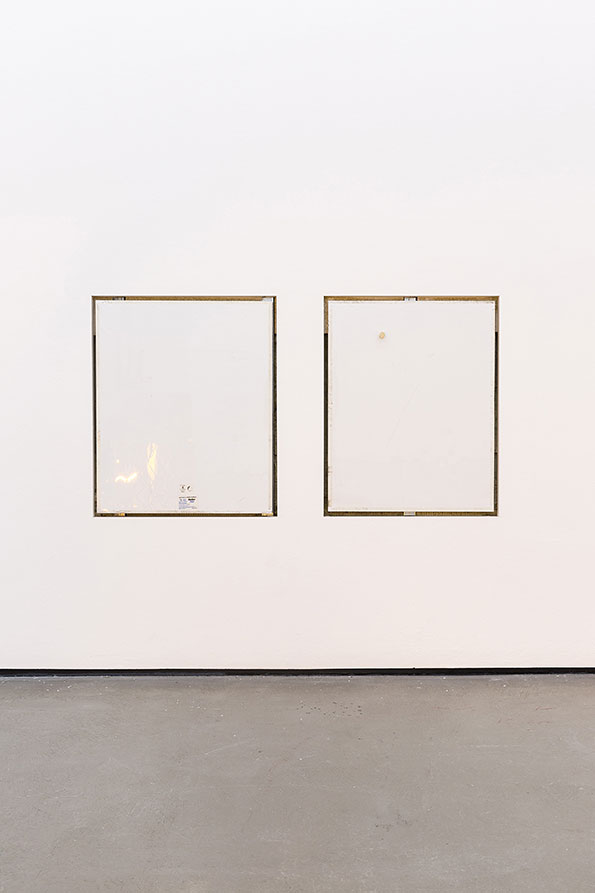





























installation views: C & O, Kunstverein In Hamburg, 2016
image credits: © Fred Dott
“Even if muses and models have long left the studio, the coffee has become bitterly cold, and the phone is ringing all so smartly, artists will not yet say that they’ve arrived in the office.” (Jakob Neulinger, on the occasion of an exhibition by Christoph Meier)
Indeed, what is the state of artmaking today? What is taking place in the studio? Why is the exhibition space still needed, and what is actually happening there? In his first institutional solo show in Germany, Christoph Meier examines the space as a site of social interaction and interrogates the conditions of contemporary art production and presentation. The audience becomes part of a real, space-filling, architectural structure that challenges the viewer to contemplate the Kunstverein as a place of assertion and speculation.
Meier’s basic working method includes site-specificity. His expansive installations always reflect the character and peculiarities of their place of origin, and express a form of theatricality through deliberate posits. These are assertions of space, structure, and architecture that expose and question themselves in the very same moment. Meier’s artworks always focus on social issues—either through the communication of the works with the recipients, collaborations with other artists, or performative moments. His primary material consists of commonly used objects that one is familiar with in real life, while the often abstract forms represent specific actions and narrations.
For his first large solo exhibition in Hamburg, Meier develops a structure consisting of bamboo elements and joints that fills the entire exhibition space. It is an edifice that gives a temporary and rational impression, spreading before the existing framework while simultaneously expanding it. As the construction breaks out of the given space, it becomes encroaching, so to speak, as it begins to autonomously stray from the location it was assigned to. The systematics of the installation, which refers to uniformity and repetition, aesthetically make reference to minimalism while simultaneously negating this concept through the formulation of pseudo-functionality. The identical spatial segments outlined in this way are repeated without taking the architectural environment into account. Meier therefore structures the exhibition space, lays claim to it, and asserts it.
He adds a series of wall pieces and sculptures to this installation that mimic the repetitive quality of the display and repeat its placement in the room. Arms appear to break out of the wall and works are inserted into them, as if they are not quite sure whether they are acting as walls, as carrier mediums, or autonomous works. The artist combines the abstract and architectural concepts of the gallery space into a social structure revolving around the narrative and performative potentials of the media involved. He integrates and visualizes the methods and strategies of his practice that is at times based on the ironic reflection upon the production and presentation of contemporary art. Finally, when the artist serves liquor alongside the structure, he deliberately aims at the viewer's perception of that object as well.